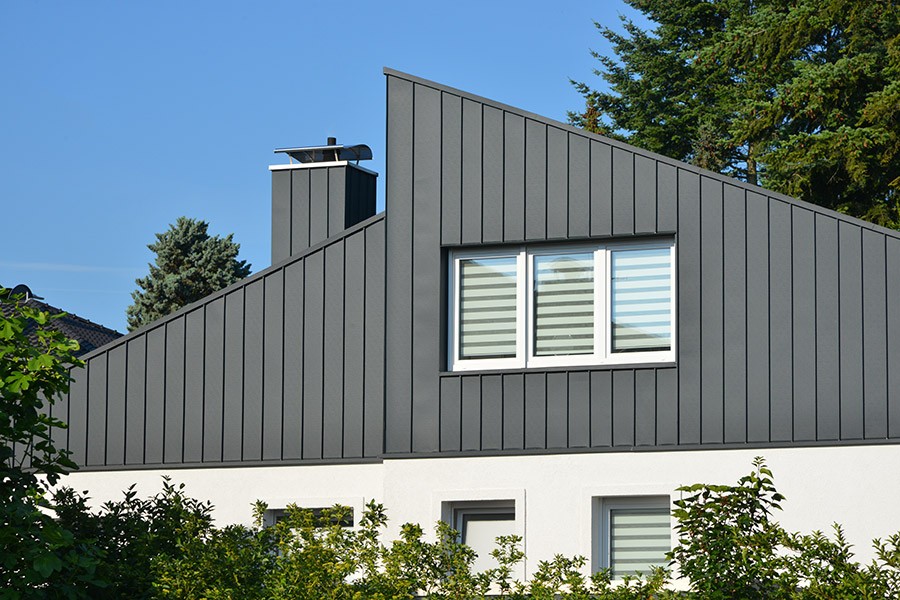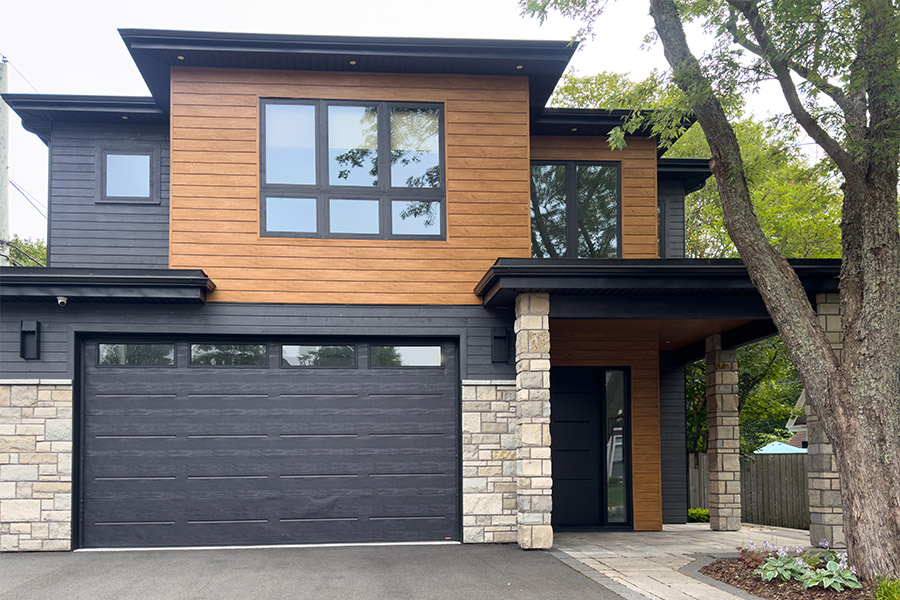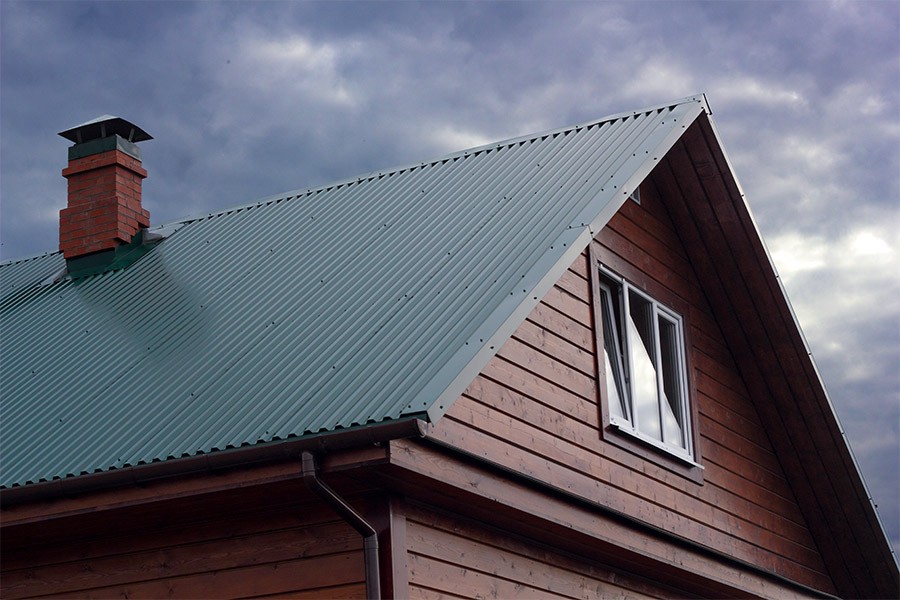You have many options to choose from when selecting metal roofing and siding colors for your project. Picking a color that compliments your project’s aesthetic and matches your personal preferences is one of the most fun parts of a project, but choosing a metal panel color goes beyond selecting your favorite shade. Your choice of metal roofing and siding colors can also impact the energy efficiency of your project. Darker metal roofing and siding colors—like charcoal gray or matte black—absorb more solar heat because they have a low Solar Reflectance Index. On the other end of the spectrum, lighter colors have a high Solar Reflectance Index because they reflect more solar heat than they absorb. Both sides of the Solar Reflectance Index can affect a building’s overall energy efficiency. Does this mean you should choose something other than dark materials for your metal roofing and siding project? Absolutely not! While the science of color dictates heat absorption or reflectance, metal roofing and siding systems are among the most energy-efficient roofing solutions, from installation to paint. Read on to learn more about the Solar Reflectance Index, its impact on your roof’s efficiency, and the overall benefits of metal roofing systems for energy efficiency.
How Does Color Impact a Metal Roof’s Energy Efficiency?
Metal roofing is recognized as one of the most energy-efficient roofing methods. However, it is not just the materials of a metal roof that make it so; the colors of the metal panels also impact a roof’s energy efficiency. Depending on the Solar Reflectance Index, a roofing color can be more or less energy efficient.
Understanding the Solar Reflectance Index
The Cool Roof Rating Council explains that the Solar Reflectance Index (SRI) “is an indicator of the ability of a roof’s surface to return solar energy to the atmosphere.” This means that when solar energy heats the roof of a home, a portion of that solar energy is either reflected back into the atmosphere by the roof’s surface or absorbed. The solar energy that is absorbed by a roof is then transferred inside the home. Whether solar energy is reflected back or absorbed into a home determines how high or low a roof’s SRI value will be. Solar Reflectance Index values range between 0 and 100 and are determined by a roof’s ability to radiate heat and the energy that it reflects back. Roofs with low SRIs, such as those with black or dark tones, have warmer surface temperatures. In comparison, roofs with higher SRIs in lighter colors, like white or silver, have cooler surfaces. When choosing a color for your project, a low or high SRI roofing material can affect a home’s comfort and energy efficiency, especially in inclement climates.
SRI’s Impact on a Metal Roof’s Energy Efficiency
Low SRIs In frigid climates like those in Montana, choosing dark-toned materials with lower SRIs can help contribute to passive home heating during winter months. When winter sunlight heats a darker-colored roof, the solar energy is then transferred inside the home. Remember that those same dark roofs can continue to warm a home in the summer, too. If a house becomes too warm in the summer, the air conditioning system can run longer to cool the interior. High SRIs Lighter-colored metal roofing and siding materials have a higher SRI and are good at reflecting solar radiation. These lighter hues help minimize heat buildup. For example, white residential metal siding does not absorb solar energy the way a home with a dark roof and siding would. Instead, it reflects up to 90% of sunlight heat. When a home’s exterior reflects heat, its cooling systems often do not have to run as long to cool the interior.
Considering SRI When Choosing a Metal Panel Color
- Stone White: Bright whites have a high SRI, meaning they reflect much of the sun’s heat. White-colored metal panels can also lend to a clean, light aesthetic for your home.
- Patina Green & Slate Blue: Hues of greens and blue contribute to a natural, calm feel for buildings. These colors tend to reflect more light, which makes them energy efficient.
- Dark Bronze: Shades of bronze have a classic, earthy feel—perfect for Montana. Darker bronze tones with a moderately low SRI absorb more energy than light tones.
- Charcoal Gray: This subtle color often symbolizes elegance and sleekness. Deep gray tones can have a lower SRI value, which means they absorb more energy than reflect it.
- Matte Black: Black tones absorb the most energy and, therefore, tend to have a low SRI value. This popular tone has a contemporary feel and can add a dramatic flair to any building.
Should SRI Impact Your Roofing & Siding Decisions?
While SRI does play a part in a roof’s energy efficiency, don’t worry about the details if you are tying yourself in knots deciding between a light or dark color. Yes, SRI can impact efficiency, but it is minimal when considering the overall energy-efficient nature of metal roofs and the fact that many paints used for metal panels are Energy Star rated. Understanding this can be helpful to your color decision-making process, especially if you want a dark-colored roof but worry about SRI. You can choose darker tones and have your structure be energy efficient, too! Learn more about the energy-efficient nature of metal panels and Energy Star-rated paints below.
The Energy Efficiency of Metal Roofing and Siding: Installation, Paint & More
As we mentioned before, metal roofing and siding panels are highly energy efficient from installation to the material of the panels themselves. The installation method for attaching metal roofing—a batten/counter-batten system—creates air gaps that insulate and stop heat from escaping. Because of this natural insulation, a home’s interior temperature is regulated more effectively, which reduces the need for the HVAC system to work overtime. Also, metal roofing and siding are more efficient when compared to traditional asphalt shingle roofs. Asphalt shingle roofs take hundreds of gallons of oil to install. This makes installing shingle roofs wasteful and hazardous for the environment and humans. Further, if traditional shingle roofing materials are not coated with reflective granules, the shingles can become extremely hot. When they get warm, asphalt shingles transfer heat back into a home, causing the cooling system to work overtime cooling your interior. Energy savings are lost, and utility bills increase. Comparatively, because of its low thermal mass, metal roofing and siding do not transfer heat in this same manner—making it a better energy-efficient choice. Bonus: many metal roofing and siding paint colors are typically Energy Star rated to reflect UV and infrared light rays. This helps buildings and homes save on energy costs all year round, no matter what the color of the panel is. When selecting a metal panel color, double check to see if the paint is Energy Star rated.
Need Help Choosing Metal Roofing & Siding Colors?
A lot of thought goes into the decision-making process when choosing metal roofing and siding colors for a commercial metal roofing or residential metal roofing project. Not only is the color aesthetic important, but so is a structure’s energy efficiency. At Great Northern Metal Company, we are experts in helping contractors and homeowners choose the best energy-efficient colors for projects. We’re here to ensure your vision is built with the highest quality materials and services. Reach out to our Bozeman metal roofing professionals for a quote today, message us, or call us at (406) 624-0435.


